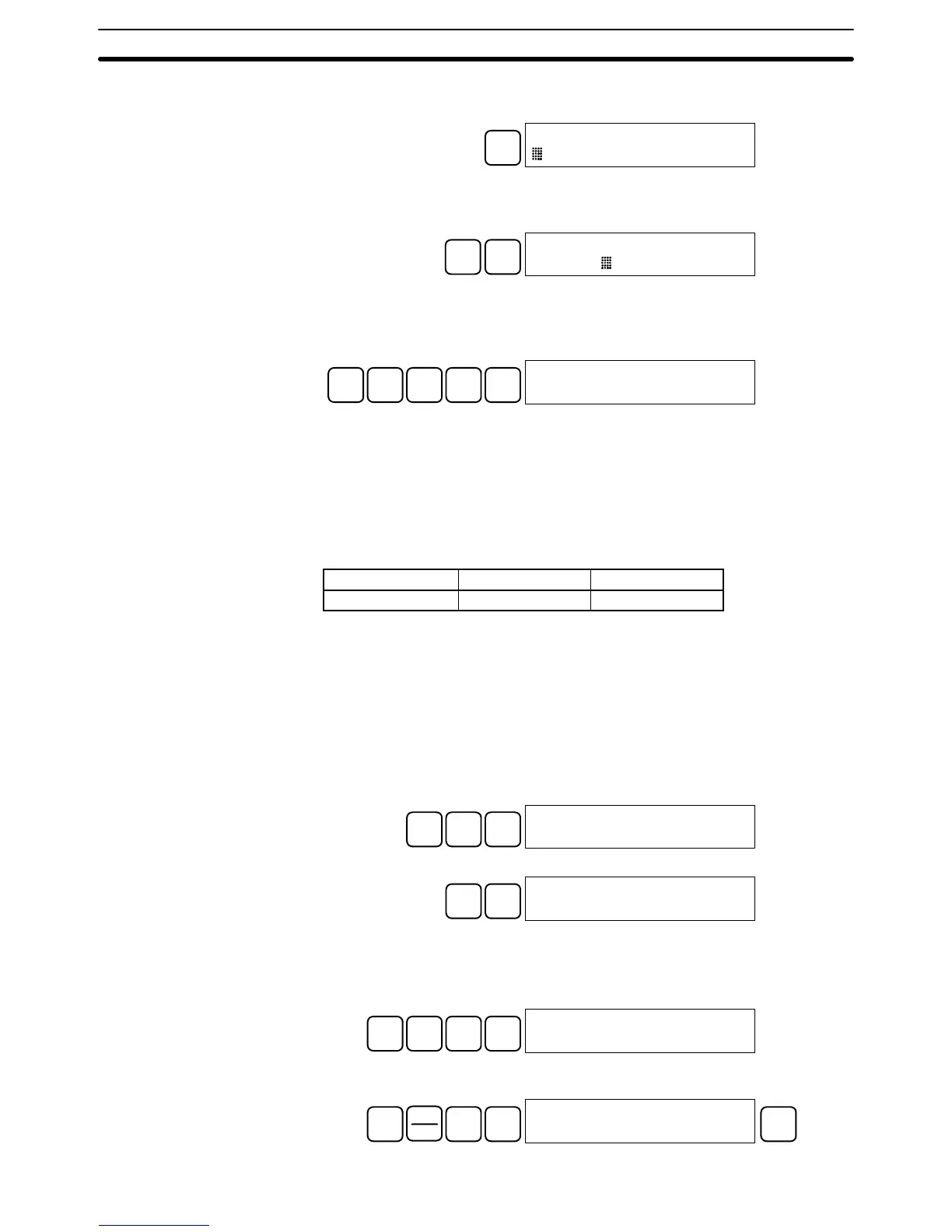3-6SectionProgramming Console Operations
102
2. Press the CHG Key to begin 3-word data modification. The cursor will
appear next to the contents of the leftmost word.
CHG
D0002 3CHCHANG?
0123 4567 89AB
3. Input the new value for the leftmost word on the display and press the CHG
Key if more changes will be made. Input the new value and press the WRITE
Key to write the changes in memory if no more changes will be made.
B
1
CHG
D0002 3CHCHANG?
0001 4567 89AB
4. Input the new value for the middle word on the display and press the CHG
Key if the rightmost word will be changed. Input the new value and press the
WRITE Key to write the changes in memory if the rightmost word will not be
changed. (In this case, it will not.)
C
2
D
3
E
4
F
5
WRITE
D0002D0001D0000
0001 2345 89AB
Note If the CLR Key is pressed before the WRITE Key, the operation will be cancelled
and the 3-word monitor display will return without any changes in data memory.
3-6-20 Changing Timer, Counter SV
There are two operations that can be used to change the SV of a timer or
counter. They are possible in MONITOR or PROGRAM mode only. In MON-
ITOR mode, the SV can be changed while the program is being executed.
RUN MONITOR PROGRAM
No OK OK
The timer or counter SV can be changed either by inputting a new value or
by incrementing or decrementing the current SV.
This operation can be used to input a new SV constant, as well as to change an
SV from a constant to a word address designation and visa verse. The following
examples show how to input a new SV constant and how to change the SV from
a constant to an address.
1, 2, 3...
1. Bring up the initial display.
2. Display the desired timer or counter.
TIM
B
1
SRCH
00201SRCH
TIM 001
3. Press the Down Arrow Key and then the CHG Key.
↓
CHG
00201DATA?
T001 #0123 #????
4. At this point a new SV constant can be input or the SV constant can be
changed to a word address designation
a) To input a new SV constant, input the constant and press the WRITE
Key.
B
1
C
2
E
4
WRITE
00201 TIM DATA
#0124
b) To change to a word address designation, input the word address and
press the WRITE Key.
SHIFT
CH
*
B
1
A
0
00201 TIM DATA
010
WRITE
Inputting a New SV
Constant
